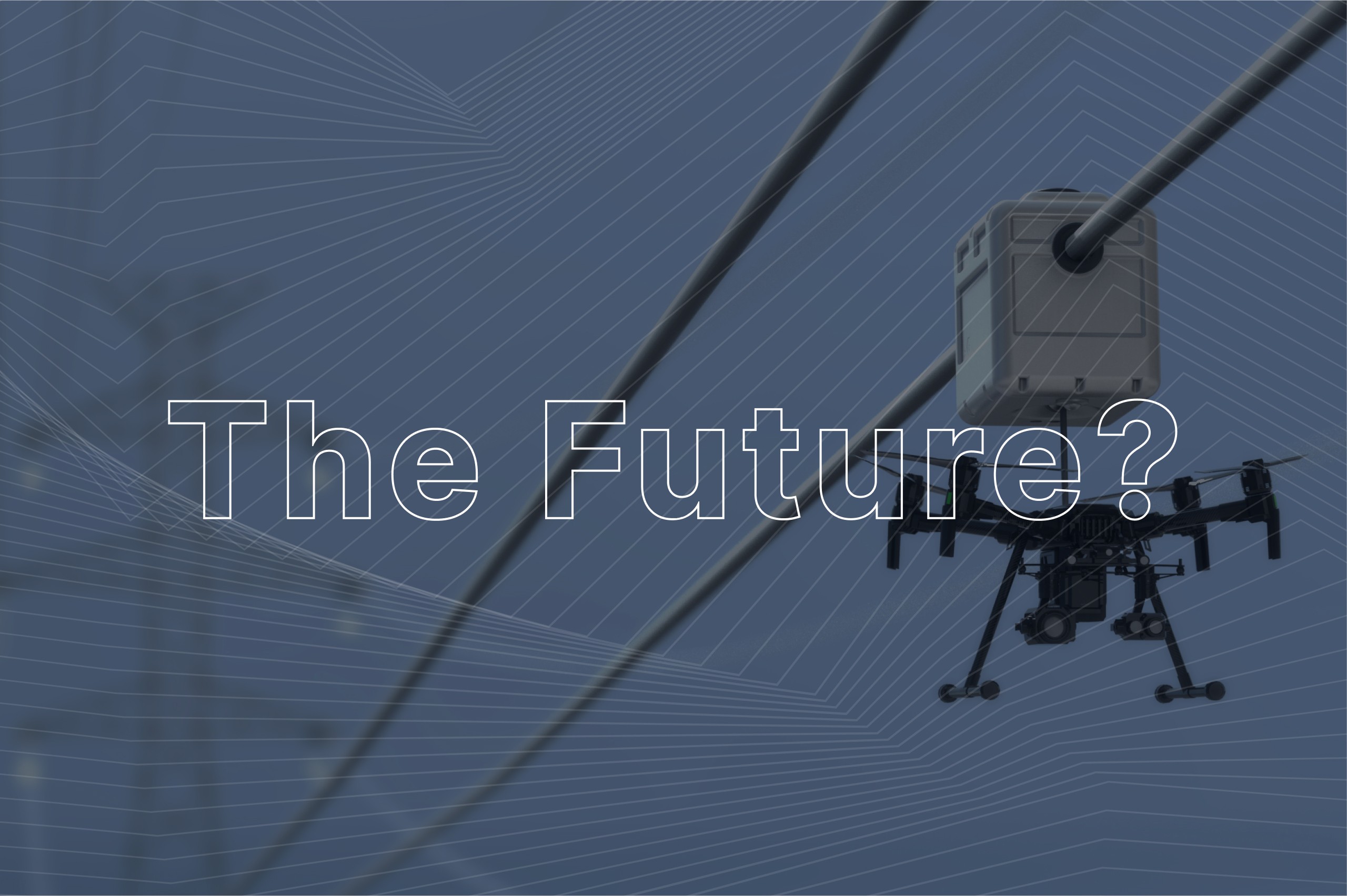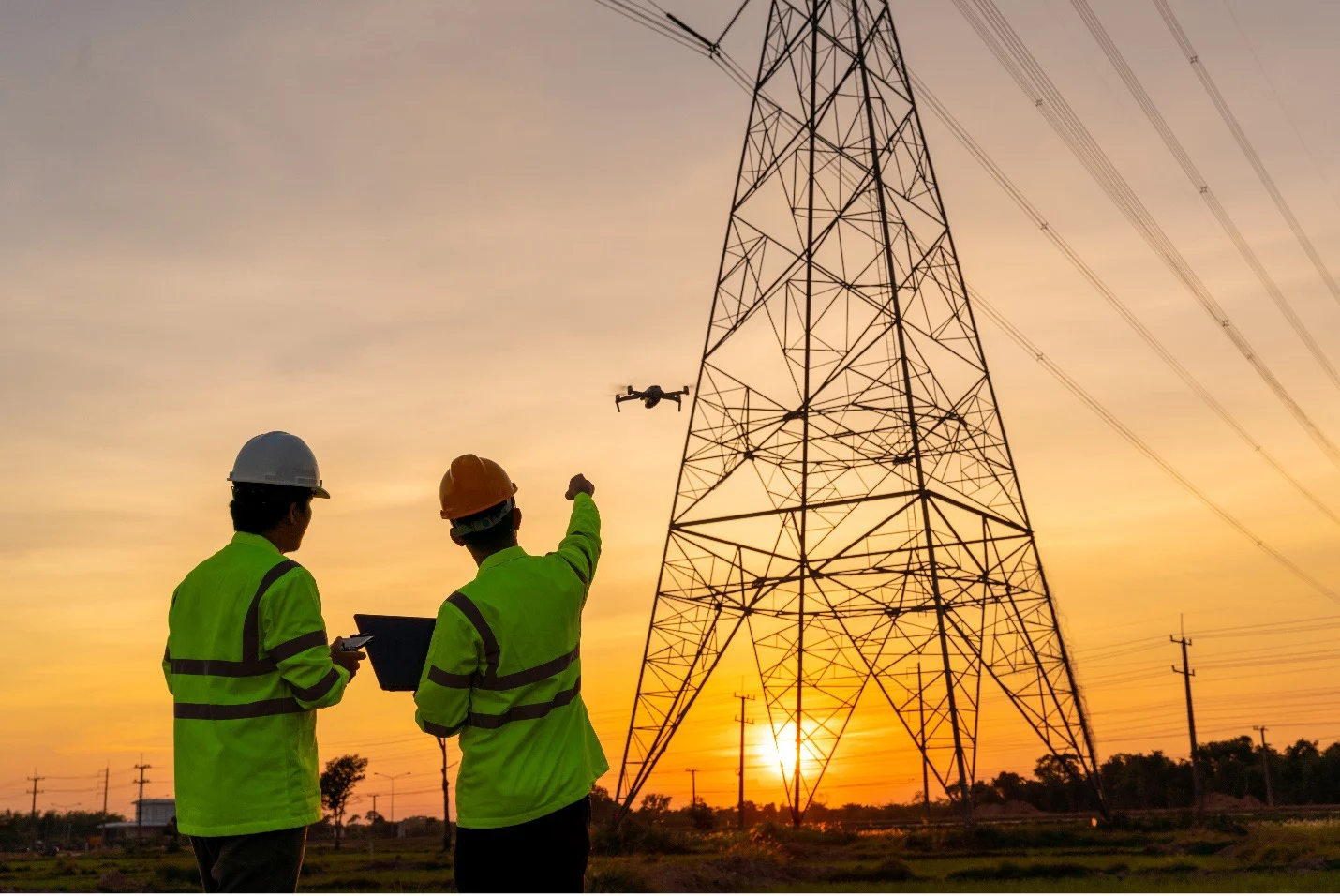
Laki Power
7 Min Read
·
21 oct 2024

As power grids age and face increasing challenges from extreme weather, utilities must find more efficient ways to maintain reliability. Drones provide a safer, faster, and more cost-effective solution for inspecting transmission lines, helping to reduce downtime and improve response times. Now, with the advent of advanced technology, drones are evolving into even more autonomous tools, pushing the boundaries of what's possible in grid monitoring.
Traditional Inspection Methods: Benefits and Limitations
In traditional power line inspections, utilities have relied on ground crews, helicopters, and, more recently, drones to monitor their grids. Ground crews provide a close-up, hands-on approach, ensuring thorough inspections, but the process is time-consuming, expensive, and often requires workers to operate in hazardous environments. Helicopters, while faster and able to cover large areas quickly, come with high operational costs, environmental concerns, and safety risks for the crew. Standard drones offer a middle ground, providing aerial views without the risks associated with manned flights, but they require manual operation and frequent recharging, limiting their efficiency over large or remote grids. These methods, while useful, leave room for improvement as utilities seek faster, safer, and more cost-effective solutions for comprehensive grid monitoring.

Traditional methods include a ground crew to manually operate drones.
While these methods have served utilities well, they each come with trade-offs in terms of cost, safety, and efficiency. As the demand for more frequent inspections grows—especially in remote areas where transmission lines are most vulnerable—new solutions are emerging. Autonomous drone systems that recharge directly on transmission lines offer a breakthrough in making frequent, wide-area inspections more practical and cost-effective.
According to a PwC study, using autonomous drones for powerline inspections can reduce operational costs by up to 34% compared to traditional methods.
The Future of Grid Inspections
The LKX Drone system is designed to address the limitations of traditional inspection methods by providing an autonomous, cost-effective, and safe solution for power line monitoring. What sets it apart is its ability to recharge directly from the power lines it inspects. This breakthrough is made possible by Laki Power’s patented power-harvesting technology, which allows the drone to autonomously dock at charging stations mounted on high-voltage lines.
Once the drone completes scanning the line or is running low on batteries it returns to the nearest charging station to recharge.
The LKX Drone autonomously flies along transmission lines, capturing high-resolution images and data on the condition of critical grid components. Equipped with advanced sensors, the drone can identify potential issues like damaged insulators or worn conductors long before they lead to failures. By recharging directly from power lines, the drone can cover vast, remote areas without the need for ground-based crews to replace batteries—something no other solution on the market currently offers.
Once its mission is complete or its battery is low, the LKX Drone autonomously navigates to the nearest charging station, docks using cameras and sensors for precision, and quickly recharges, ready for its next flight. This eliminates the logistical challenges of maintaining external power sources in hard-to-reach locations, such as diesel generators or solar panels, which often require regular maintenance.
A Game-Changing Approach
The LKX Drone system offers several key advantages over traditional inspection methods:
Cost Efficiency: According to a PwC study, using autonomous drones for powerline inspections can reduce operational costs by up to 34% compared to traditional methods. (1)
Safety: By removing the need for human operators to conduct inspections in hazardous environments, the system greatly enhances safety.
Increased Frequency and Coverage: Continuous power access means drones can be deployed for regular inspections, covering more ground and detecting faults early, before they cause significant damage.
Adaptability in Remote Areas: The ability to recharge directly on power lines makes the LKX Drone especially suited for remote and difficult-to-access areas, where manual inspections or battery swaps would be logistically challenging.
Join the 2025 Innovation Partnership
As Laki Power continues to push the boundaries of grid monitoring, we're launching an exclusive 2025 Partnership Program. This initiative invites forward-thinking utilities to partner with us in testing and refining the LKX Drone system. Early adopters will have the opportunity to gain firsthand experience with this groundbreaking technology and contribute to shaping the future of grid inspections. Space is limited, so reach out today to learn more about joining the program.